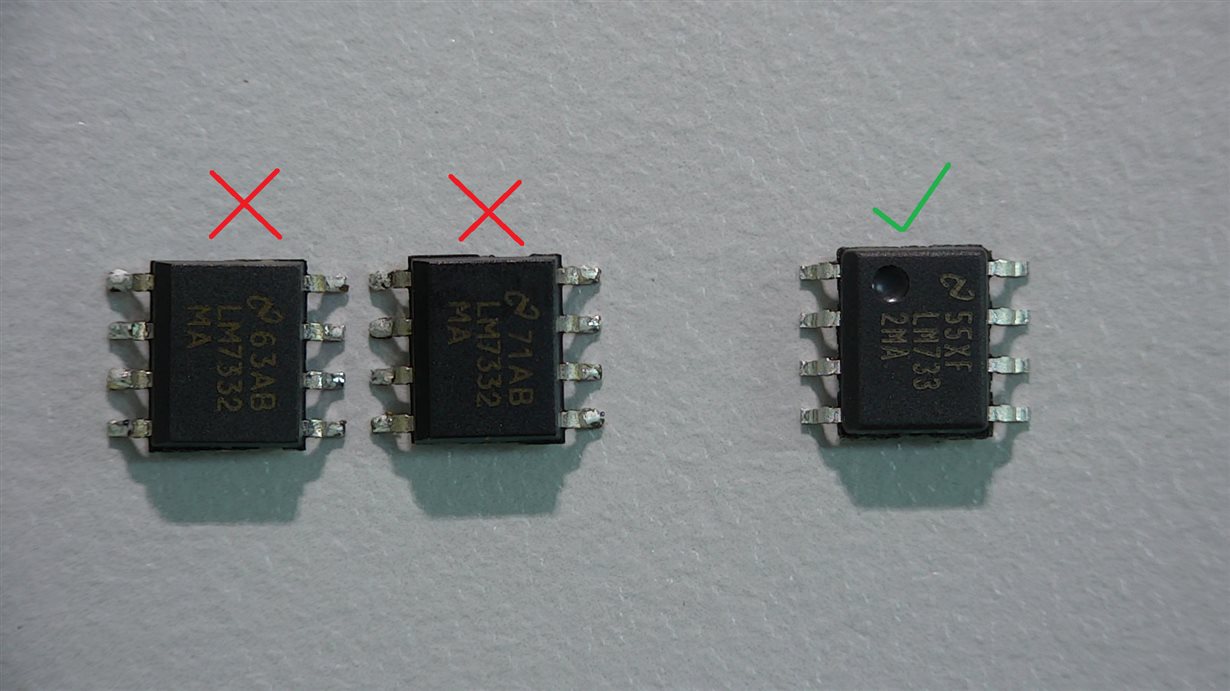A unity gain buffer using the original packaged format IC (Full dimple on pin 1) has been operational for years in current product. The new batch of ICs with the new (Chamfered) package appear to provide an output 1.5 times the input to the follower (Especially when no input signal is applied), resulting in incorrect performance of the product. This is a certified product for explosive environments and such change is quite alarming.
Could someone please explain the above phenomenon? Has there been a silicon "upgrade"?
Further info: UA is used as the unity gain buffer with pin 1 connected to pin 2. Pin 3 serves as the input and is biased to ground with a 1M resistor and a 100nF Cap. The output of UA drives the input of UB (pin 6) which is configured as a comparator. The IC is powered by a single ended 6V supply.
Many thanks. Any information highly appreciated.
Panos


